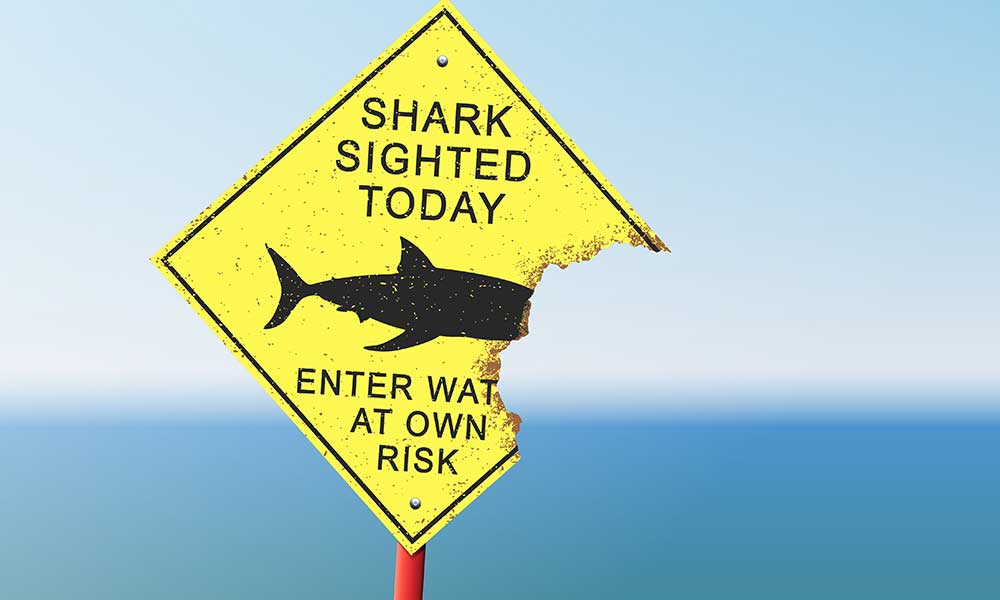In 2015, Mick Fanning was attacked by a Great White Shark on live television.
The surfer made it out unscathed, but the same couldn’t be said for his yellow-bottomed board.
The incident reignited a debate around “yum yum yellow”, the theory that sharks are attracted to the color yellow and are more likely to attack surfers who wear it.
It was a theory that Fanning himself bought into, as he changed the color of his board soon after his encounter in Jeffreys Bay, South Africa.
And while there are some merits to this theory, there’s a little more to it than sharks simply liking to chow-down on yellow things.
What is Yum Yum Yellow?
In the 1970s the US Navy conducted studies to determine the color of life vest that was least likely to incite a shark attack.
They found that sharks were more likely to go after swimmers wearing yellow, and so the idea of yum yum yellow was born.
Is Yum Yum Yellow true?
Are Sharks Attracted To The Color Yellow?
We can’t see what sharks see, but we do know how their eyes work in comparison to our own, and it seems that they lack the ability to see colors in the same way that we do.
In other words, they are basically color blind, but they can still see shades of monochrome.
The difference between yellow and black is quite striking to us, but to a shark, it could be the equivalent of a really light shade of black and a really dark one.
Bright colors are more attractive simply because they stand out more, or so the theory goes.
We also know that many species of shark, including tiger sharks and bull sharks, seem to completely ignore muted colors like black and blue.
It could be that there is some truth to the myth, but it’s more likely that sharks are attracted to the lightness and brightness as it stands out more.
In truth, we don’t really know.
Many surfers and scuba divers insist that yellow boards, wetsuits, and flippers are more likely to be attacked, and it seems that everyone has an anecdotal story of a shark encounter that seemingly backs this up.
It was even tested on an episode of MythBusters during Shark Week.
They used different colored bags of bait to see which ones the sharks preferred, and while “food” seemed to be the only preference that sharks had, they did lean more toward the yellow bags.
What color should you not wear in the ocean?
If you’re worried about shark attacks, don’t use yellow surfboards and don’t wear high contrast colors.
Anything that makes you stand out more against the ocean is likely to make you more of a target.
Of course, it’s worth noting that shark attacks are very rare and there is a tradeoff taking place.
People typically wear bright lifejackets and wetsuits so that they can be seen from the air or from a distance if they become lost.
Colors, Sharks, and Misunderstandings
Humans react to colors in unique and surprising ways. Red is seen as the color of anger and fear, but it’s also seen as the color of dominance.
A study on Olympic combat sports found that judges were more likely to vote for the red fighter than the blue or grey fighter during close contests.
It has also been suggested that blue is calming, green triggers feelings of wellbeing, and orange sparks creativity.
It seems that these colors trigger a psychological connection.
When we see red, we think of blood, warnings, and anger; green is associated with nature, blue with the sky and sea.
As for yellow, it tends to make us happy, possibly because of its association with the sun and warmth.
But when sharks see that little yellow blob bobbing around in the water, they’re not thinking, “That makes me really happy”.
They just see something floating, something that catches their eye, and they think to themselves, “I’ll go and have a bite and see what happens.”
You could always wear red and try to show your dominance, but we wouldn’t recommend it.







